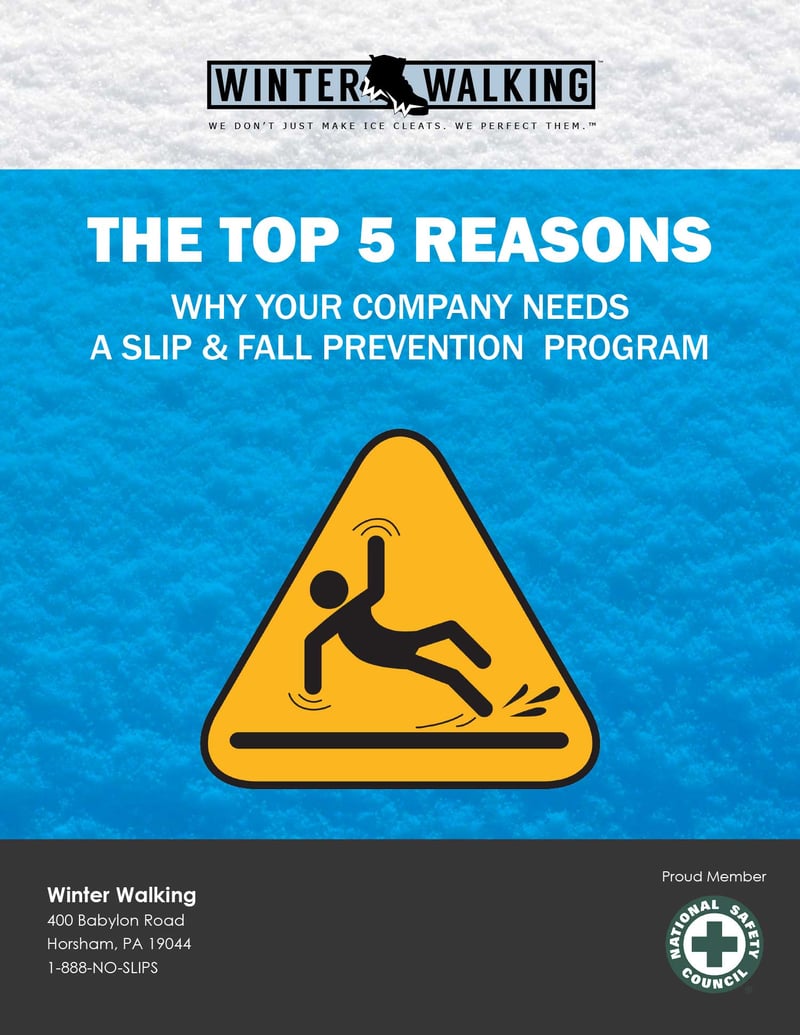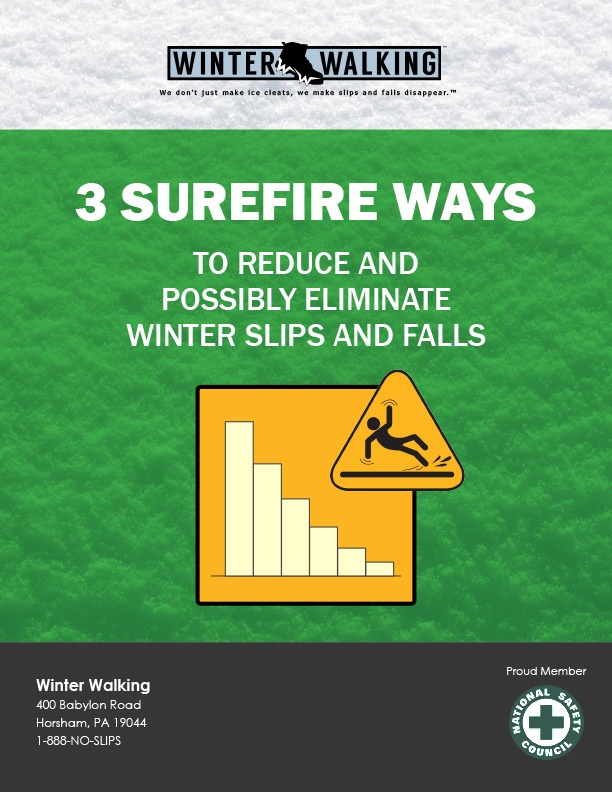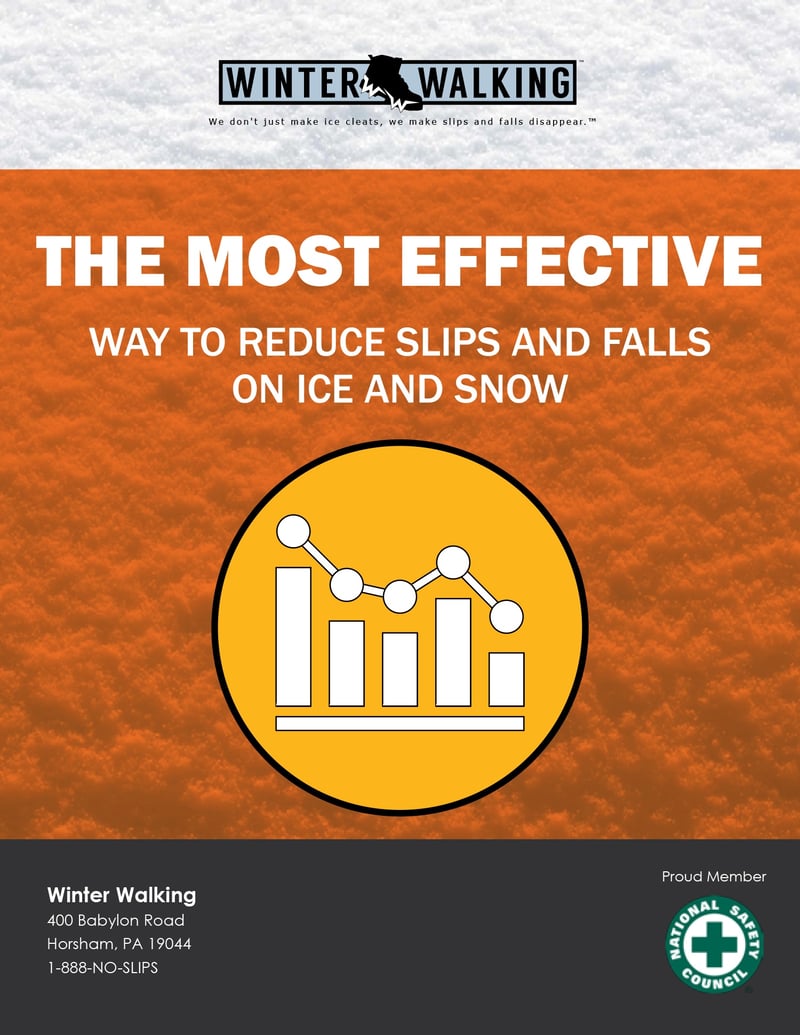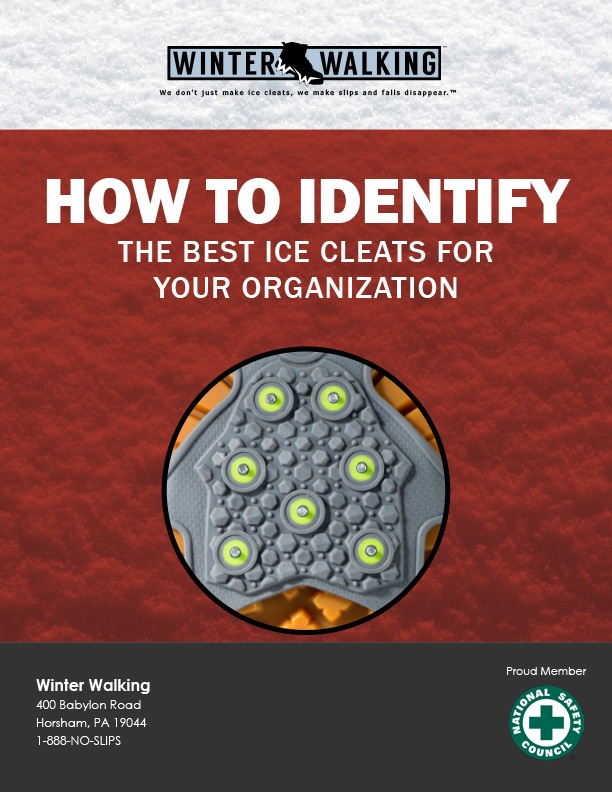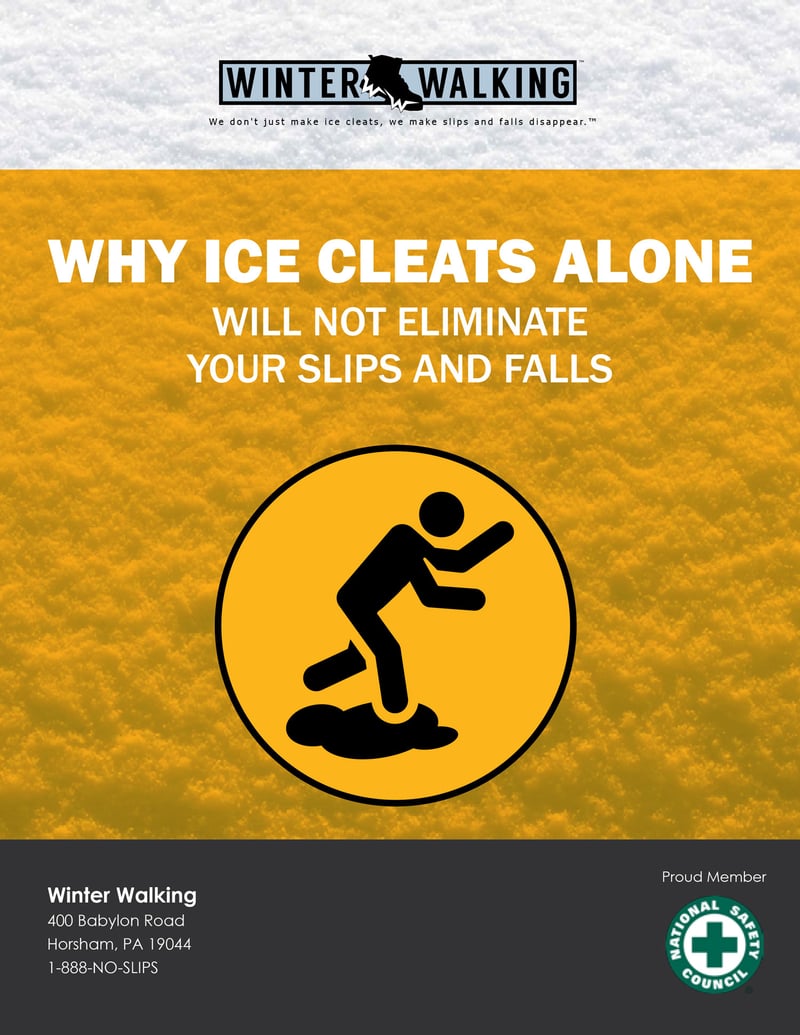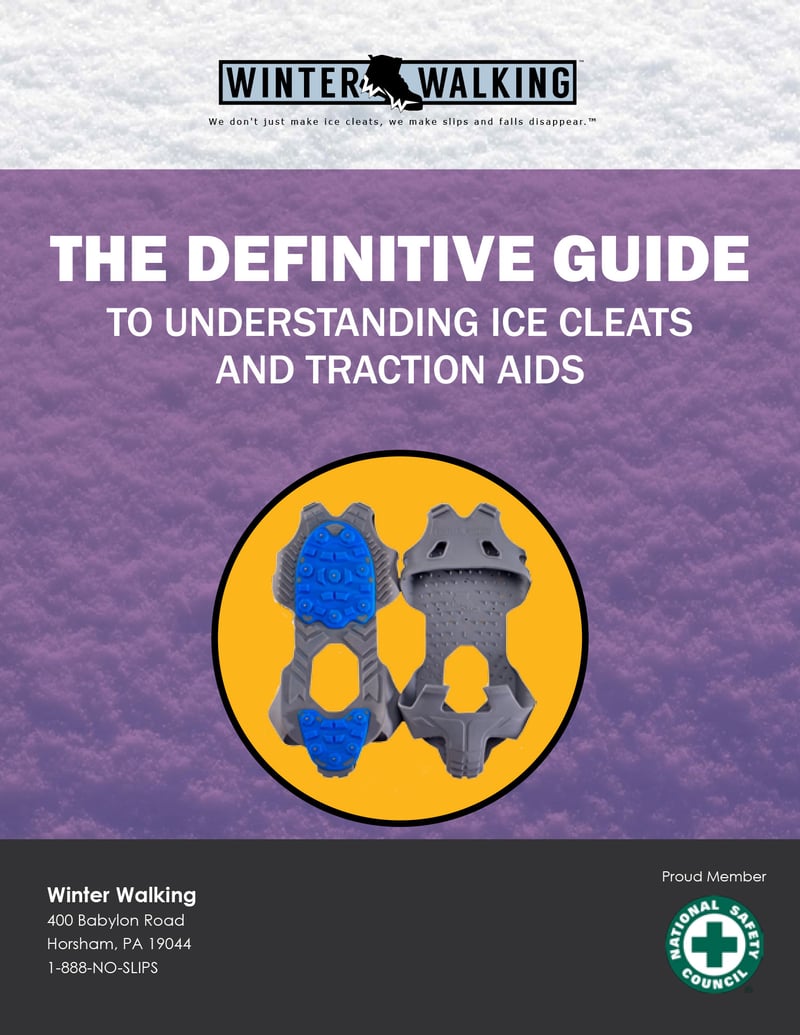Have you ever purchased ice cleats in the past and regretted the choice? Why? Perhaps you had a slip and fall incident and made a “reactive” decision that resulted in buying the cheapest thing you could find online or at your local big box retailer? Perhaps you then heard nothing but complaints from your people: “I can’t wear these indoors.” “My ice cleat broke.” “My cleats keep falling off.”
“These take too long to put on.” “What am I supposed to do when I drive?” Sound familiar?
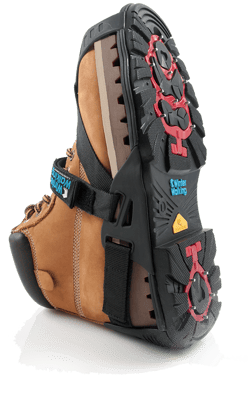 To break that reactive cycle, you need to have a plan. Start by figuring out – long before December – what features are most important when choosing the right ice cleats to dramatically reduce slips and falls on winter ice and snow so that you can make proactive purchases. (More important, while compiling your list of must-have features, consider the people who need to wear them!) Here’s a short list of questions to ask to help make the task easier:
To break that reactive cycle, you need to have a plan. Start by figuring out – long before December – what features are most important when choosing the right ice cleats to dramatically reduce slips and falls on winter ice and snow so that you can make proactive purchases. (More important, while compiling your list of must-have features, consider the people who need to wear them!) Here’s a short list of questions to ask to help make the task easier:
- Is the traction footwear aggressive enough?
- Are they easy on/off?
- Can they be worn indoors without having to be removed?
- Are they industrial strength?
- What is your price range?
- Do these traction cleats need to keep a “defined heel” exposed when in use?
- Are they lightweight?
- Do you need shoe protection?
- What about built-in insulation for your traction aids?
- Are the cleats non-sparking?
Einstein may have said it best when he defined insanity as “doing the same thing over and over again and expecting different results." But I’ll leave you with my own take on it: “You don’t need to be a genius to make smarter decisions, but you must have a plan.”
Thank you for reading. If you found value in this post, please consider sharing it with your LinkedIn network or simply “like” it.
Bill Coyne is the VP of Sales for Winter Walking. He has been helping organizations across a wide variety of business sectors prevent workplace slips and falls in ice and snow for over 14 years. Winter Walking currently helps some of the world’s largest organizations keep their employees both safer and more productive while working outdoors in the winter season. Contact bill@winterwalking.com or visit www.winterwalking.com.


